Steering Column Replacement All Except C3500HD
Removal Procedure
Tools Required
J 42640 Steering Column Anti-Rotation Pin
- Set the front wheels in the straight-ahead position.
- Install the J 42640 anti-rotation pin in the lower steering column shroud access hole.
- Disable the supplemental inflatable restraint (SIR) system. Refer to Disabling the SIR System in SIR.
- Remove the screws and the steering column trim panels. Refer to Knee Bolster Replacement in Instrument Panel, Gauges and Console.
- Disconnect the transmission control cable from the column.
- Disconnect the harness at the connectors.
- Remove the nut and the bolt from the upper to the lower shaft connection.
- Remove the nuts from the upper and the lower support brackets.
- Lower the steering column.
- Remove the steering column assembly.
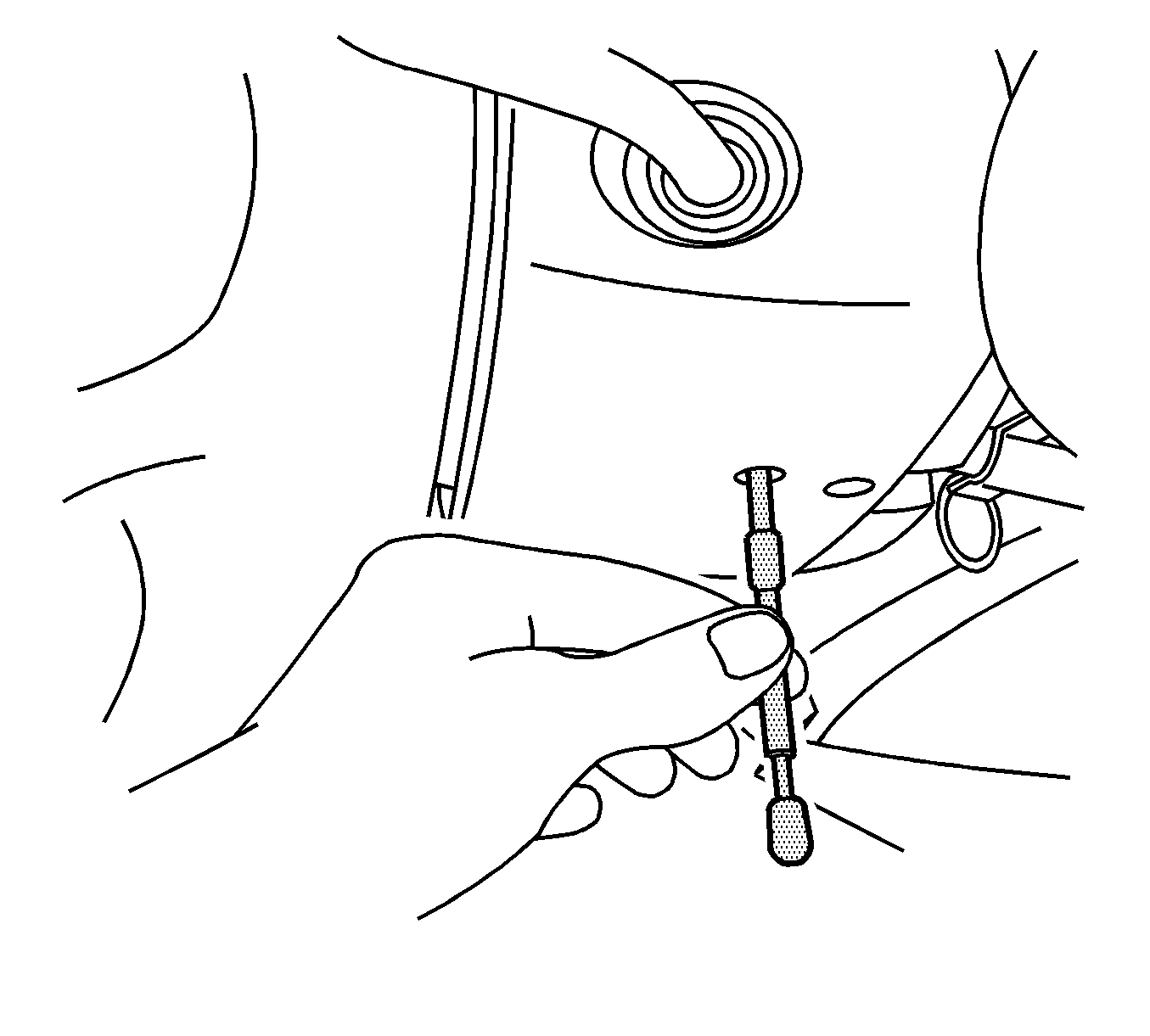
Caution: When you are performing service on or near the SIR components or the SIR wiring, you must disable the SIR system. Refer to Disabling the SIR System. Failure to follow the correct procedure could cause air bag deployment, personal injury, or unnecessary SIR system repairs.
Caution: Unless directed otherwise, the ignition and start switch must be in the OFF or LOCK position, and all electrical loads must be OFF before servicing any electrical component. Disconnect the negative battery cable to prevent an electrical spark should a tool or equipment come in contact with an exposed electrical terminal. Failure to follow these precautions may result in personal injury and/or damage to the vehicle or its components.
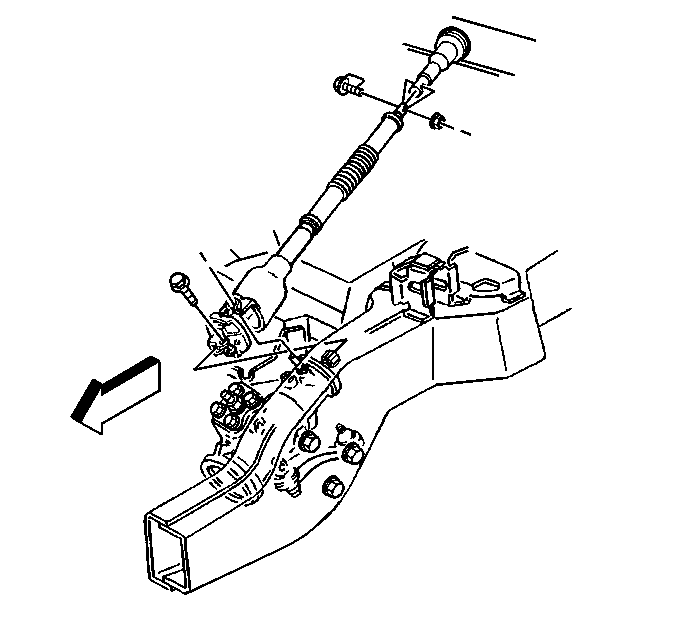
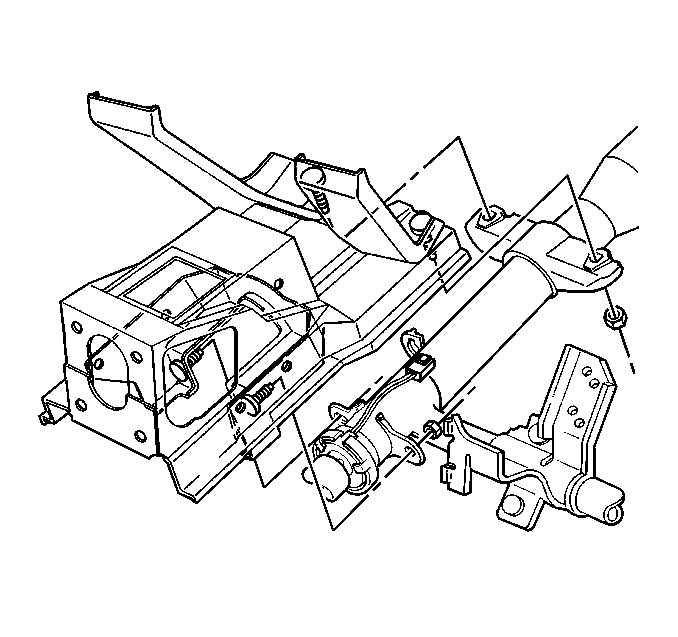
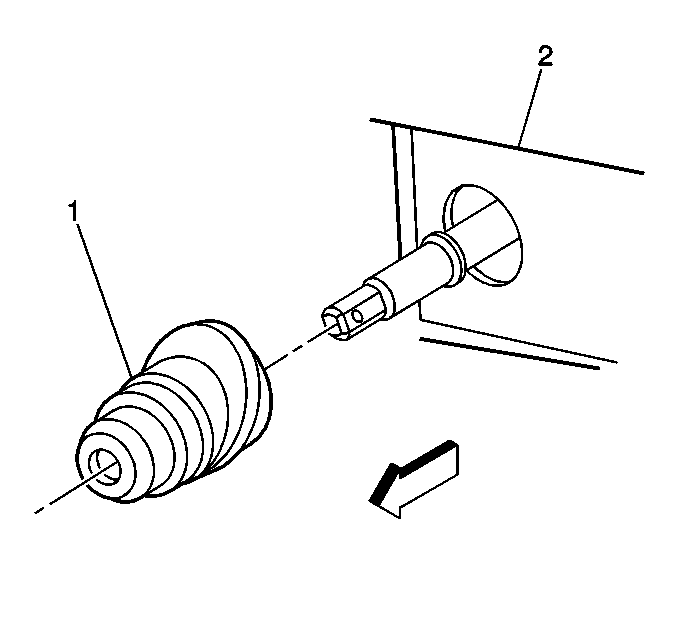
Notice: Once the steering column is removed from the vehicle, the column is extremely susceptible to damage. Dropping the column assembly on the end could collapse the steering shaft or loosen the plastic injections, which maintain column rigidity. Leaning on the column assembly could cause the jacket to bend or deform. Any of the above damage could impair the columns collapsible design. Do NOT hammer on the end of the shaft, because hammering could loosen the plastic injections, which maintain column rigidity. If you need to remove the steering wheel, refer to the Steering Wheel Replacement procedure in this section.
Rotate the column so that the shift lever clears the dash panel (2) opening.
Installation Procedure
- Lower the end of the steering column through the dash panel (2) opening and the steering column seal (1).
- Connect the harness to the connectors on the steering column.
- Raise the steering column into place.
- Rotate the column up over the two upper studs.
- Install the lower column nuts.
- Install the upper column nuts.
- Install the bolt and the nut to the upper end of the shaft.
- Remove the J 42640 from the lower steering column shroud access hole.
- Connect the transmission control cable.
- Install the steering column trim panel and the screws. Refer to Knee Bolster Replacement in Instrument Panel, Gauges and Console.
- Enable the SIR systems. Refer to Enabling the SIR System in SIR.

Caution: If steering column to cowl panel seal is torn or otherwise damaged, it must be replaced. Confirm that the seal and inner race are properly located. Failure to do so may allow carbon monoxide into the vehicle, which may result in serious personal injury or death.

Loosely assemble the two nuts.
Notice: Use the correct fastener in the correct location. Replacement fasteners must be the correct part number for that application. Fasteners requiring replacement or fasteners requiring the use of thread locking compound or sealant are identified in the service procedure. Do not use paints, lubricants, or corrosion inhibitors on fasteners or fastener joint surfaces unless specified. These coatings affect fastener torque and joint clamping force and may damage the fastener. Use the correct tightening sequence and specifications when installing fasteners in order to avoid damage to parts and systems.
Tighten
Tighten the lower and upper column nuts to 30 N·m (22 lb ft).

Tighten
Tighten the nut to 62 N·m (46 lb ft).

Steering Column Replacement C3500HD
Removal Procedure
Tools Required
J 42640 Steering Column Anti-Rotation Pin
- Set the front wheels in the straight-ahead position.
- Install the J 42640 in the lower steering column shroud access hole.
- Remove the screws and the steering column trim panels. Refer to Knee Bolster Replacement in Instrument Panel, Gauges and Console.
- Disconnect the transmission control cable from the column.
- Disconnect the harness at the connectors.
- Remove the nut and the bolt from the upper to the lower shaft connection.
- Remove the nuts from the upper and the lower support brackets.
- Lower the steering column.
- Remove the steering column assembly.

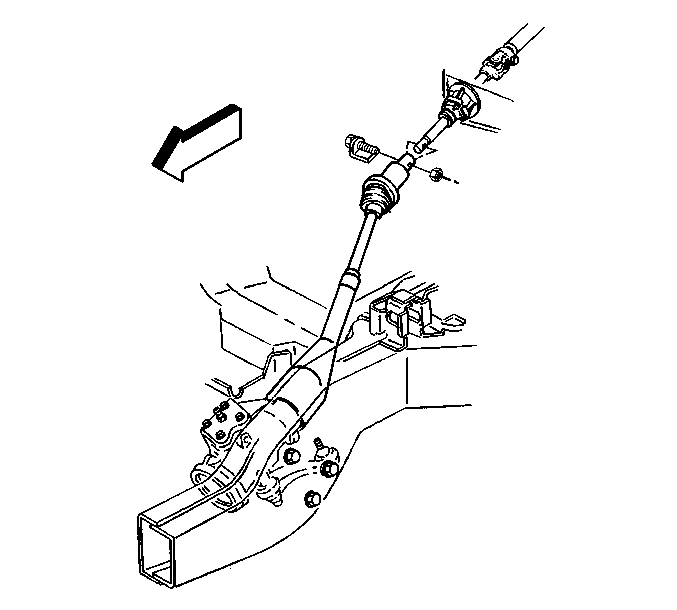

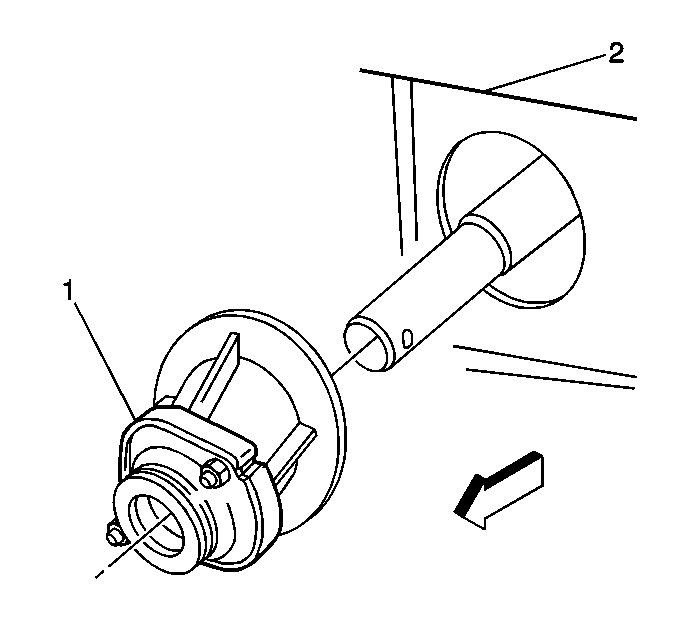
Notice: Once the steering column is removed from the vehicle, the column is extremely susceptible to damage. Dropping the column assembly on the end could collapse the steering shaft or loosen the plastic injections, which maintain column rigidity. Leaning on the column assembly could cause the jacket to bend or deform. Any of the above damage could impair the columns collapsible design. Do NOT hammer on the end of the shaft, because hammering could loosen the plastic injections, which maintain column rigidity. If you need to remove the steering wheel, refer to the Steering Wheel Replacement procedure in this section.
Rotate the column so that the shift lever clears the dash panel (2) opening.
Installation Procedure
- Lower the end of the steering column through the dash panel (2) opening and the steering column seal (1).
- Connect the harness to the connectors on the steering column.
- Raise the steering column into place.
- Rotate the column up over the two upper studs.
- Install the lower column nuts.
- Install the upper column nuts.
- Install the bolt and the nut to the upper end of the shaft.
- Remove the J 42640 from the lower steering column shroud access hole.
- Connect the transmission control cable.
- Install the steering column trim panel and the screws. Refer to Knee Bolster Replacement in Instrument Panel, Gauges and Console.

Caution: If steering column to cowl panel seal is torn or otherwise damaged, it must be replaced. Confirm that the seal and inner race are properly located. Failure to do so may allow carbon monoxide into the vehicle, which may result in serious personal injury or death.

Loosely assembly the two nuts.
Notice: Use the correct fastener in the correct location. Replacement fasteners must be the correct part number for that application. Fasteners requiring replacement or fasteners requiring the use of thread locking compound or sealant are identified in the service procedure. Do not use paints, lubricants, or corrosion inhibitors on fasteners or fastener joint surfaces unless specified. These coatings affect fastener torque and joint clamping force and may damage the fastener. Use the correct tightening sequence and specifications when installing fasteners in order to avoid damage to parts and systems.
Tighten
Tighten the lower and upper column nuts to 30 N·m (22 lb ft).

Tighten
Tighten the nut to 62 N·m (46 lb ft).

